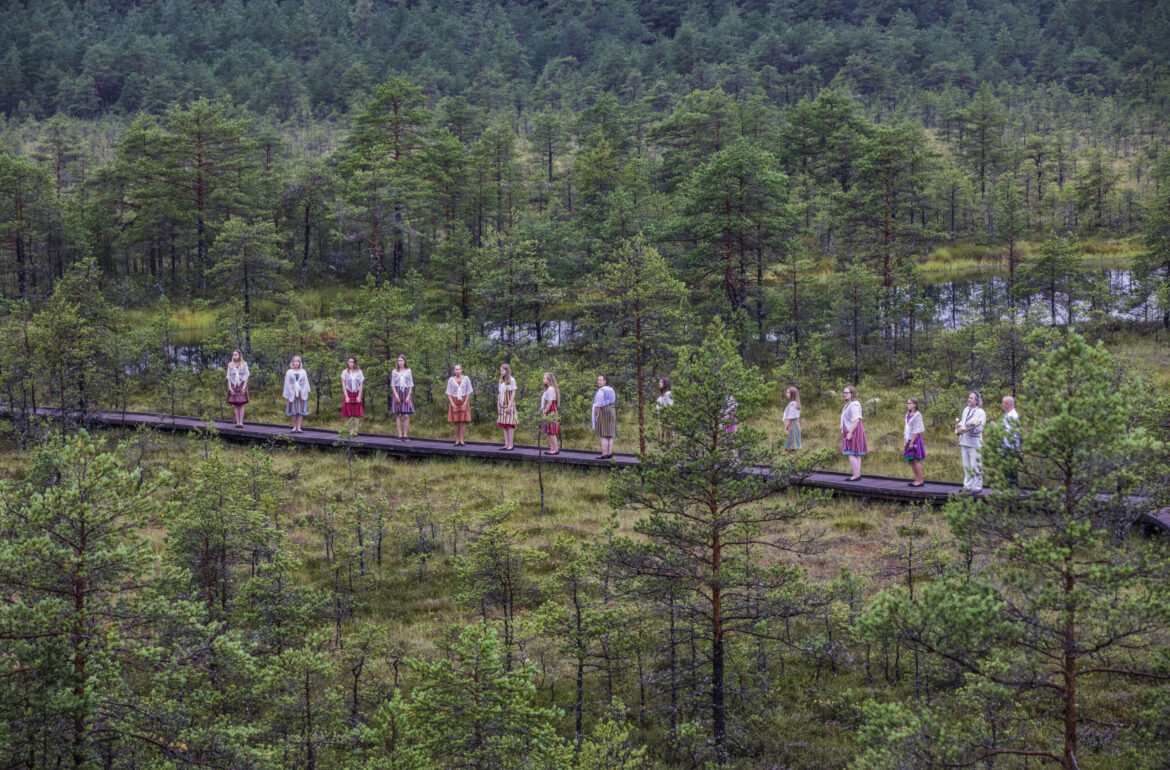The Estonian Association of Science Journalists and the Estonian Research Council are inviting up to fifteen science journalists from EUSJA member associations to take part in a study trip to Estonia, from 20 to 22 May 2015, to learn about the high-level research on biodiversity and climate change being done in this country.
With half of its land covered with forests, and a sea territory dotted with more than 1,500 islands, Estonia can boast of a strikingly abundant biodiversity.
On the three days of the trip, you will be meeting a number of outstanding Estonian ecologists and other environmental scientists, as well as experience Estonian nature first-hand on a visit to the wooded meadow of Laelatu, one of the most species-rich places in Europe.
Programme itinerary at a glance
Tuesday, 19 May: Arrival in Tallinn; Welcome Dinner
Wednesday, 20 May: Tallinn University; Tallinn University of Technology (presentations on the TUT’s research vessel Salme, cruising the Tallinn Bay)
Thursday, 21 May: visits to the Laelatu wooded meadow and the Tartu Observatory
Friday, 22 May: University of Tartu; Estonian University of Life Sciences; return to Tallinn
Saturday, 23 May: Departure
Presentations (more to be added)
Shinya Sugita, Tallinn University. Environmental history in the Holocene: why does it matter?
Maarja Kruusmaa, Tallinn University of Technology. Using aquatic robots to protect the environment
Urmas Lips, Tallinn University of Technology. Eutrophication and hypoxia in the Baltic (includes demo observations on board the research vessel)
Rivo Uiboupin, Tallinn University of Technology. Satellites and advanced marine monitoring
Anu Reinart, Tartu Observatory. Monitoring biodiversity from space
Leho Tedersoo, University of Tartu. The global biodiversity of fungi
Meelis Pärtel, University of Tartu. Dark biodiversity
Raivo Mänd, University of Tartu. Potential effects of a warming climate on forest birds in hemiboreal Estonia
Ülo Niinemets, Estonian University of Life Sciences. The role of plants in climate change
Tiiu Kull, Estonian University of Life Sciences. Orchids, symbols of beauty and mystery
Steffen Noe, Estonian University of Life Sciences. SMEAR Estonia– integrated ecosystem and climate research on large scale
Kalev Sepp, Estonian University of Life Sciences. The impact of climate change on the migration routes of the Eurasian crane
For inquiries please contact:
Priit Ennet
The Estonian Association of Science Journalists
priit.ennet@err.ee
Phone 00372 5145608
Liis Livin
Project Manager
Estonian Research Council
liis.livin@etag.ee
Here are some examples of biodiversity and climate change studies in Estonia.
Diversity in the dark
A new theory of dark biodiversity has originated from the University of Tartu. While astronomers have discovered that the things we can see through the telescope – stars, galaxies, and planets – are only a tiny fraction of what there really is, with dark matter and dark energy being the dominant parts of the universe, a group of scientists in Tartu say that, in a sense, something similar is going on with the species and ecosystems of Earth. Prof. Meelis Pärtel and his research team have proposed a simple but exciting idea: in addition to ordinary biodiversity, made up of species that we can see in the forest or on the meadow, these habitats also contain dark biodiversity, species that we cannot see there. These are species that are potentially capable of inhabiting these sites, but are missing for some reason. Studying the missing species can help us understand biodiversity loss.
Diversity in the cloud
Most of us are on Facebook. But the world’s species have their own social network called the
PlutoF cloud. This is a database and computing service created at the Department of Botany in the University of Tartu that can be used for taxonomic, phylogenetic and ecological research. In cooperation with the High Performance Computing Center of the University of Tartu, PlutoF provides cloud computing services for substantial, gene sequence-based analyses.
Blades in distress
Knowing the molecular language of plants can help us better understand climate change. When plants are under stress, they emit airborne particles that can have an impact on ozone concentrations and cloud formation. At the Centre of Excellence in Environmental Adaptation (ENVIRON), Prof. Ülo Niinemets and his colleagues are studying these molecular stress signals in a lab that is unique in the world. A new field station for measuring the interaction of ecosystems with the atmosphere is under construction.
This event was supported by Estonian Research Council through European Union Regional Development Fund.
 Back
Back


